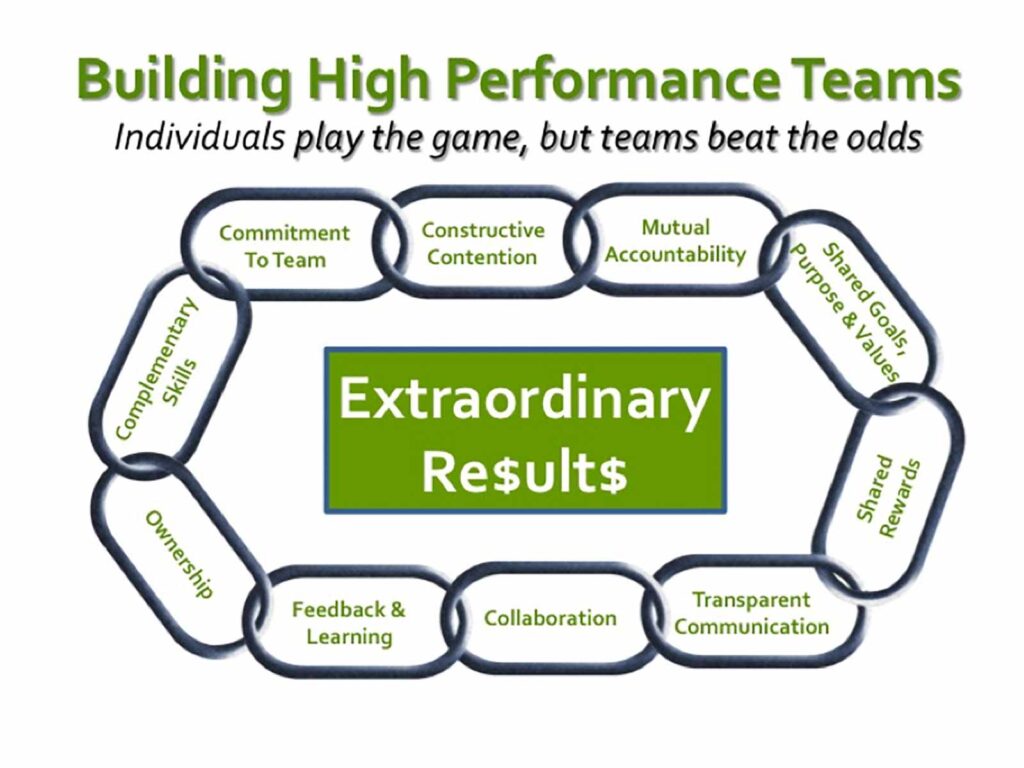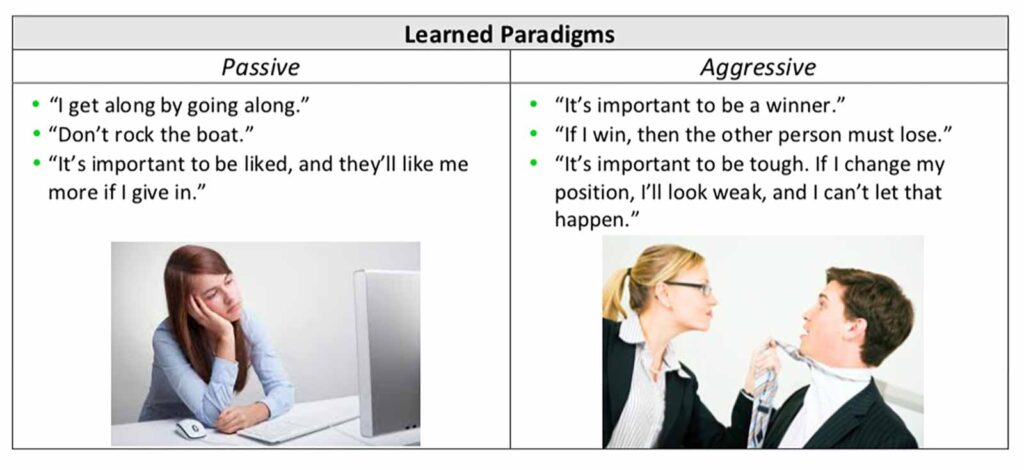In America, we treasure our independence and freedom. It’s in our DNA, and it’s easy to understand why if you’ve read 1776 by David McCollough. This outstanding book gave me a deeper appreciation of the principle-based sacrifices our founders made to achieve the freedom many of us take for granted. I would never suggest that our cultural disposition toward independence is a bad thing. But like most strengths, it can sometimes get in our way—especially when we want to accomplish something that is bigger than what we can accomplish individually.
Leadership Principle
Leading is getting harder and harder in every walk of life. Stakeholders demand improved performance and bottom line results faster than ever before. Leadership tenure is shrinking everywhere, from CEOs to head coaches, leaders of non-profit organizations, and even academic institutions. The pressure for performance continues to rise.
Some leaders try to pull the easy lever by surrounding themselves with people who agree with their every decision and who do what they are told. The temptation to fall into this trap is greater than ever given the increasing need for fast results, even when the leader knows better.
In the heat of the battle, while tackling urgent challenges and opportunities, execution is likely faster when direct reports fall in line with the wishes of the leader. But this trap saps an organization of vibrant energy, innovation, commitment and, ultimately, ownership of results. If everyone is merely following and managing up, the leader’s capacity becomes the bottleneck that throttles the success of the whole organization.
On the flip side, another tempting easy lever is to follow the guidance offered by one of the most “liked” calls to action on LinkedIn: “Hire great people and get out of their way.” Many people who “like” this statement are just tired of being micro-managed. However, this is a dangerous leadership principle because it can translate to an abdication of responsibility.
Leadership is a contact sport. Can you imagine a quarterback stepping back and saying, “You guys are great, now go get ’em!” Certainly leaders should not be in the way, but they’d better be in the game orchestrating their team.
What Matters Most
Individuals play the game, but teams beat the odds. Full disclosure: I borrowed that from the U.S. Navy Seals, an organization I respect and admire. The best leaders surround themselves with the most talented people they can possibly find, and they are secure enough to hire people who are better than them in key areas of responsibility. Most importantly, they build high performing cross-functional teams with complementary skills.
Building a high performance team is as much art as it is science. The best leaders think like an engineer and feel like an artist. Teams are a lot like living, breathing organisms that respond to many variables that leaders should persistently influence and balance. These variables should be attended to as vigorously as a master gardener who weeds, fertilizes, waters and prunes the garden.
The old days of promoting people onto teams based entirely on relationships or individual results are over. Of course results matter, but how results are achieved matters more than ever when building a team because we know that tapping into individual behavioral preferences and core values to create team synergy can make all the difference.
Consider the performance of the San Antonio Spurs. The Spurs have been the champions of the National Basketball Association five times over the past twenty years. If you stack up the individual achievements and talents of the members of each of their championship teams against those of their opponents, the awards and credentials of all five of their championship teams are less impressive. But the Spurs won because they played better as a team, leveraging complementary skills and synergies to beat their more “talented” and “athletic” opponents. The 2014 NBA Finals against the Miami Heat was classic. Many people considered the Lebron James led 2014 Miami Heat to be the most talented NBA team ever assembled. The Spurs didn’t just beat them—they destroyed them.
Before we dive into how to build a high performance team, I’ll define what success looks like.
The Ten Most Important Traits of High Performance Teams
- Synergy: Team members complement each other’s strengths, weaknesses, and behavioral preferences.
- Commitment: Team members are fully committed to the team’s success, and they are willing to sacrifice their egos for the good of the team.
- Constructive Contention: The toughest challenges and issues are put on the table and debated vigorously. Team members are passionate and unguarded, and everyone commits to and supports resolutions and next steps even when consensus is not possible.
- Accountability: Team leadership is shared, and members hold each other accountable, challenge and help each other, and are deeply concerned about letting down their teammates.
- Purpose: The team develops shared goals, purpose, and core values aligned with stakeholder needs.
- Rewards: The team shares in significant rewards for achieving their goals and even bigger rewards for exceeding expectations.
- Transparency: Communication is fluid and transparent, and all information is shared openly and candidly.
- Collaboration: Team members exude a “we are stronger than me” attitude by breaking down silos, working across functional boundaries, and proactively tapping into each other’s strengths.
- Growth Mind-Set: There is a growth mind-set grounded in curiosity. Team members are aware of each other’s strengths and weaknesses, and they seek feedback that will help them improve performance.
- Ownership: The entire team feels a joint sense of ownership for their collective results, and they behave like owners.

When a team exhibits these ten traits, it is firing on all cylinders. The chain is unbreakable. The outcome will be extraordinary results that fuel positive feelings and tangible rewards shared with respected comrades. I’ve been fortunate to serve on a few teams like this, and each ranks vividly toward the top of my list of most treasured memories.
I’ve also been on teams that did not perform so well. Perhaps you’ve been on a team that:
- Confronts tough issues in unproductive ways which damage team morale
- Tries to smooth over and “manage away” tough issues rather than confronting them assertively
- Avoids contentious issues altogether, or wait for someone else to bring them up
- Settles for “adequate” solutions to tough, contentious problems, rather than staying with the tension to prompt innovative breakthroughs
These teams suffer from an inability to handle contentious challenges productively, one of the most common root causes of low performing teams. Telltale signs include team members who:
- Behave in ways designed to lower the self-esteem of team members who don’t agree
- Withhold information about the problem
- Focus too quickly on one favored solution rather than encourage exploration of many possible ways of handling the problem
- Protect their own parochial interests rather than refocus the team on the shared higher business purpose
- Devalue the potential contributions of others who look at the problem from a different angle, and seek out input from those who think like they do
- Talk too much, and listen too little
Why do team members behave this way? Mostly because this is how they were taught to handle contentious issues by parents, care givers, teachers, coaches and role models. It’s helpful for leaders to realize that many of us learned two dominant paradigms for dealing with stressful situations and confrontations in our youth:

What can leaders do to move teams from low to high performance?
The best leaders understand these paradigms, and manage them proactively my modeling and teaching a more productive way of dealing with conflict that I call constructive contention. Specifically, they help their team:
- Maintain and build mutual self esteem and avoid attacks that threaten self-esteem
- Seek opportunities to reinforce teammates
- Catch, highlight and reward constructive contention
- Maximize information flow, connect the dots by setting context for change
- Encourage extensive sharing of team knowledge about challenges and opportunities for purposes of growth
- Seek deeper understanding and clarify by asking in-depth questions
- Open up to other opinions, and accept that you cannot know everything
- Listen deeply to fully understand an opposing point of view rather than rebuff
- Summarize what you have heard to ensure accuracy and show that you are listening
- Welcome diversity in personal style and in ideas, seeking different perspectives, and encouraging contrarian points of view
- Go beyond the first solution, and challenge solutions with alternatives
- Find guidance in the higher business purpose
- Avoid turf battles and parochial power plays
- Proactively seek areas of common ground and shared business purpose to find win-win solutions
- Ask the question, “If our customers or consumers were here, what would they say?”
How To Build A High Performance Team
If you need to form a high performance team, I strongly advise giving advance consideration to team chemistry and the ability of individual players to proactively navigate contention constructively. Here is my ten-step process:
- Assess individual strengths and behavioral preferences
- Select members using a plan to complement strengths and fill gaps to achieve balance and synergy
- Develop a charter, define roles, and align on the most important goals and rewards
- Proactively create an environment in which teammates can learn about each other personally to better understand their formative life experiences, what drives them, and ultimately build trust
- Establish a cadence of team training that incorporates real-world and mission critical challenges and obstacles
- Define lead and lag success metrics as well as a process to monitor progress
- Establish feedback mechanisms and norms for making decisions and holding each other accountable
- Clarify needed support from stakeholders
- Finalize rules of engagement, and execute
- Course-correct via team work sessions (See The 4 Disciplines of Execution by Chris McChesney, Sean Covey, and Jim Huling for an excellent model)
We all have individual strengths that enable us to perform certain roles and tasks more comfortably than others. Members of higher performing teams learn to lean on each other’s strengths to synergistically achieve a higher level of performance than could be achieved by operating individually or in silos.
A Success Model
I like to use analogies and metaphors to help crystallize a point, so let’s look outside the business world for a success model. There are so many good analogies to examine for insight and inspiration when it comes to leaders of high performing teams. The coxswain on a rowing crew, the conductor of an orchestra, the quarterback of a football team; the list goes on. All of these leaders can have an exponential impact on their teams if they fully grasp this leadership principle, pull the right levers, and push the right buttons.
I can think of no better place to look for inspiration than the most powerful leadership role in the world; The President of the United States of America. Abraham Lincoln’s boldness in building a balanced and dynamic leadership team comprised of his rivals is well documented by Doris Kearns Goodwin in her award winning book, A Team of Rivals. But I’m picking one a little more current. Back in 1978, I wrote a paper for a class while attending Purdue University titled Leading with Character, and the subject was Governor Ronald Reagan.
When Ronald Reagan took the leadership reins later as POTUS, our economy was faltering. The rate of inflation had hit an alarming 13.5%, interest rates had ballooned to over 20%, unemployment exceeded 10%, and our foreign policy was a train wreck. Like many politicians, Ronald Reagan offered us hope during his campaign.
Fortunately, he also brought leadership skills to turn hope into action that ultimately delivered sustained prosperity for our country. Whether you agreed with his political philosophy or not, you had to respect his leadership. He surrounded himself with a strong cadre of leaders willing to speak up and push back on their leader. Without a team that included leaders such as George Shultz, Ronald Reagan would not have been able to achieve what he did for our country.
President Reagan encouraged constructive contention that made his team stronger. Examples are well documented in the book A Different Drummer by Michael K. Deaver. President Reagan was secure enough to listen to his team, and then make the call and accept responsibility for the results. He had the guts to do what he firmly believed was right, not just what was popular. His successful handling of the air traffic controller crisis is a great example.
Mr. Reagan also united people rather than dividing them to achieve power. He embraced his adversaries in a genuine attempt to find common ground and achieve progress, rather than arrogantly digging in his heels and blaming his adversaries for the kind of paralysis we have seen in Washington for the last decade. His work with Tip O’Neill was a model for achieving progress even when faced with a formidable adversary with a conflicting agenda.
Ronald Reagan was one of the most successful Presidents in the history of The United States of America because he built a synergistic team that beat the odds. In the face of significant adversity, he and his team dramatically improved our economy and strengthened our country’s leadership position and role globally. Yes, he was a great communicator. But more importantly, he built and orchestrated a synergistic, high performance team that was much more powerful than the sum of its parts.





